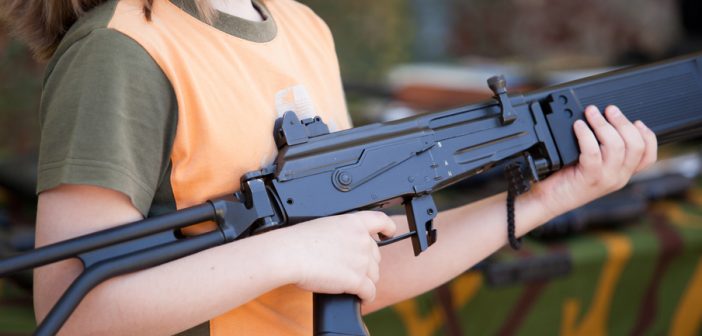I like to think of myself as a lover not a fighter, so unsurprisingly I really freaked out when my boys started playing with pretend weapons when they were little.
The beginning of the end
The first time it was with sticks as swords or guns. My overreaction must have stuck in their little minds as they knew that mummy didn’t like fighting games.
So didn’t I look quite the hypocrite the year I bought them water pistols for Christmas? I still wonder how I managed to rationalise that in my head.
Then a Teenage Mutant Ninja Turtle dress up complete with Leonardo’s swords entered the house via a well-meaning relative. I managed to put some pretty strict parameters around the use of that.
But I knew resistance was futile when the ultimate weapon arrived – a NERF gun.
I was suitably mortified and more than a bit shocked that another parent was the one to deliver a gun into my then 7 year old son’s hands. Obviously, it was a parent who didn’t have the hang ups I did about pretend weapons!
Accepting the inevitable
Fast forward a few years, my boys now own an arsenal of NERF guns and even their little sister delights in trying to let off a round or two. (They are actually really handy for shooting cockroaches. Or so I’ve heard.)
Obviously my stance on pretend weapons is a little more relaxed now that my house has been infiltrated, however I still have my reservations. Absolutely no slingshots or knives and I refuse to fund the purchase of any new weapons or ammunition. If they want it they have to pay for it out of their own money. This has had the desired limiting effect. Interestingly, as they get older it is becoming less of an issue.

What do the experts say?
I know I’m definitely not the first or last parent to have strong feelings about pretend weapons so I find it really interesting that there is quite a deficit in recent research around the impact and implications of weapons play among young children.
However, there are a lot of experts who believe that weapons play in children is not only normal it is actually a healthy part of their development and play.
After all, children’s play is their way of making sense of the world and interpreting what they see and hear. Guns and weapons feature heavily in our society and can be observed in media, movies, games and obviously also children’s toys, so it is not surprising that they appear in our children’s play. Although it’s worth noting that kids were playing ‘Cops and Robbers’ and ‘Cowboys and Indians’ long before TV and video games.
Using weapons for good instead of evil
As any parent can attest, even if a child doesn’t have access to toy weapons, if they want to play that type of game they will make them out of something. As evidenced by my boys and their sticks.
Rather than prohibiting weapon play and making it taboo (and inevitably even more enticing) experts recommend using your child’s weapon play as a way to build on their critical thinking skills and moral values.
As this article emphasises, there is a big difference between playful aggression and serious aggression with intent to harm.
By allowing weapon play but setting rules, such as don’t point a weapon at someone’s face and don’t force someone to play who doesn’t want to, we can teach our children to play in the bounds of safety and respect, while still exploring and using their imagination.
In fact, I think one of the biggest benefits of weapon play for parents is that it provides another way to help our children become aware of moral and social justice issues in a safe and supportive environment.

